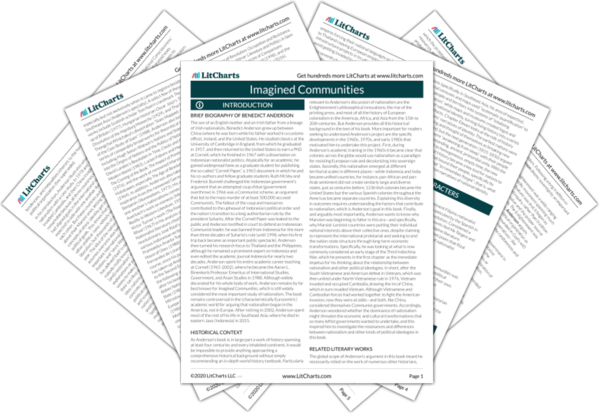Anderson uses the example of the United States Civil War to show the profound effects of the fact that history is written by the victors: the official narrative assumes that the North and South were somehow “destined” to remain together, therefore portraying the current state of affairs (the North and South are united) as somehow “natural” or “correct.” Similarly, Anderson suggests that
The Adventures of Huckleberry Finn used an image of racial harmony to try and make readers think the legacy of slavery and racism had magically disappeared. The fact that this and Anderson’s other examples run contrary to “common sense” shows how much this “common sense” is based on ideological narrative rather than facts; curious readers should start wondering not only whether the stories they learned about their nations’ histories
are true, but perhaps more importantly, what these stories
try to say about the nation and whom they
benefit.


